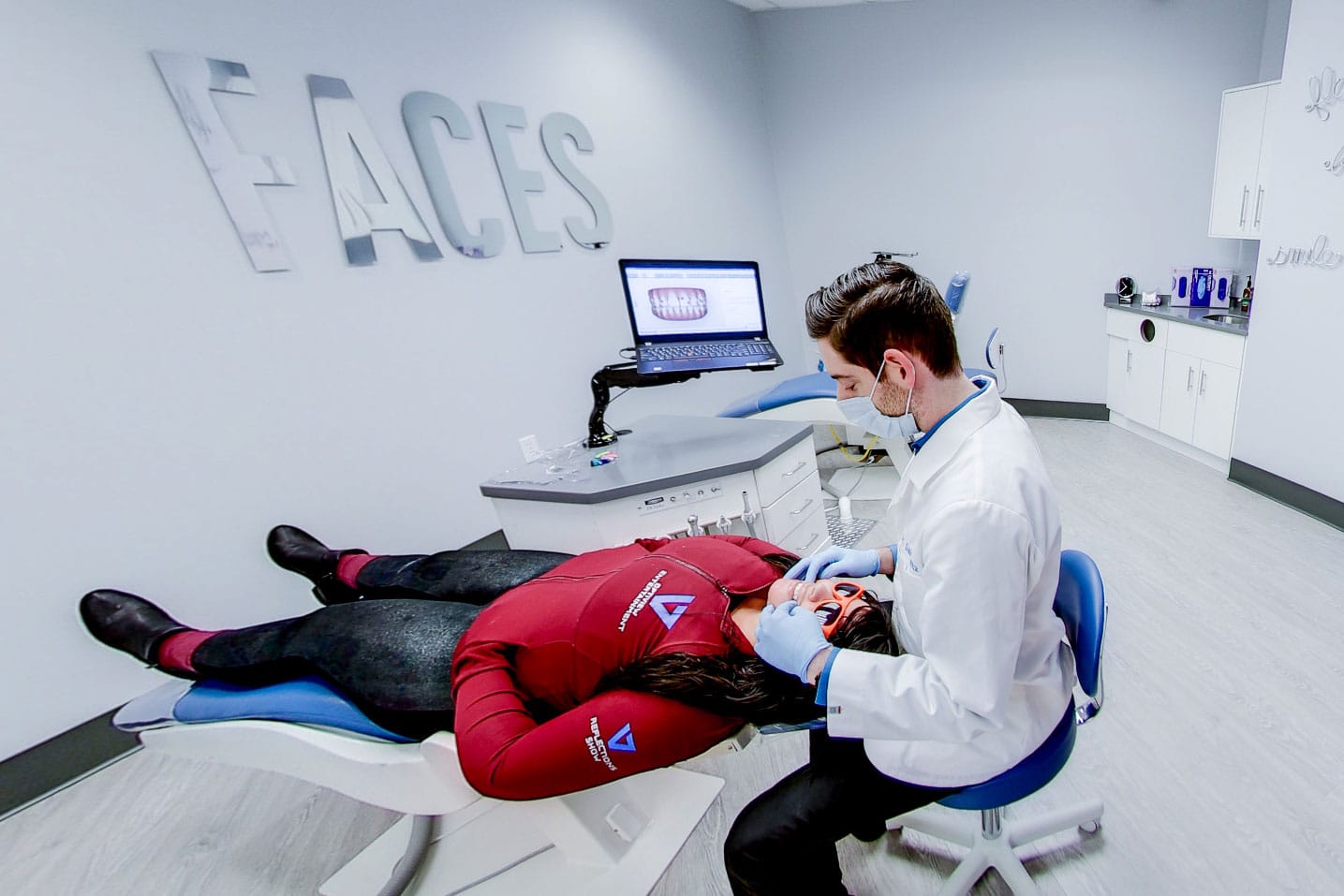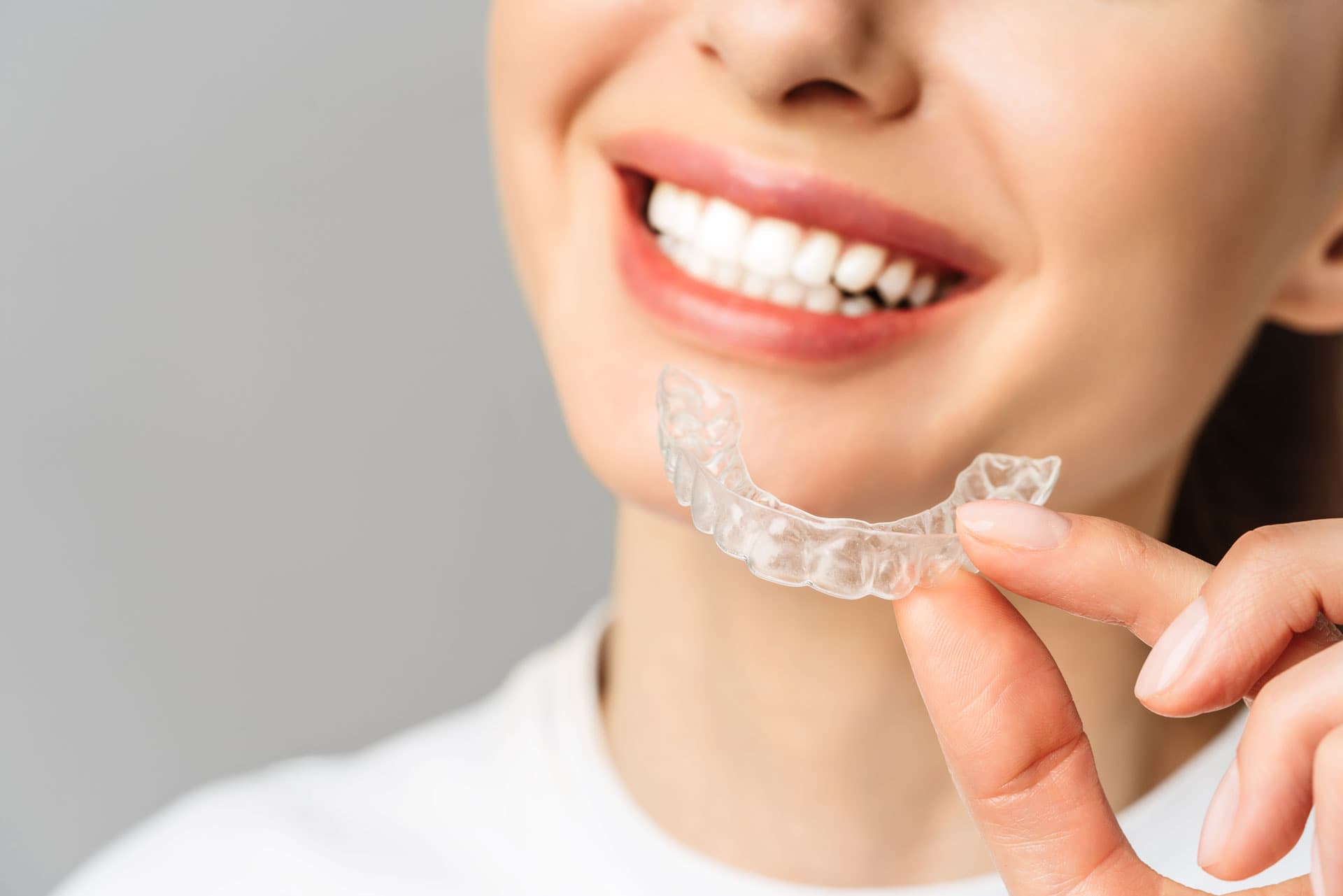GLO Professional Teeth Whitening
We offer teeth whitening in Orlando with offices in Lake Nona, Winter Garden, and Dr. Phillips, FL. GLO Professional teeth whitening is a growing trend for restoring the natural, bright-white luster of healthy teeth. Unfortunately, teeth can get discolored over time due to various factors such as aging, orthodontic difficulties, and cigarette use. Even something as simple as your diet, which includes coffee, tea, and soda, might cause tooth discoloration.
Fortunately, here at Sakowitz Smiles Orthodontics, GLO Professional Whitening provides quick and easy options for obtaining a brighter, healthier smile.
GLO Professional Teeth Whitening is one of the most modern forms of professional tooth whitening available today, with remarkable effects in under an hour! This ground-breaking process employs illuminating heat technology to break down surface stains on your teeth and restore their shine. You’ll receive top-notch care that ensures your experience is comfortable and safe, thanks to Dr. Sakowitz’s skill and talent in conducting the treatment at our cutting-edge facilities.
If you are wondering if GLO Professional Teeth Whitening in Orlando, Lake Nona, Winter Garden, and Dr. Phillips, FL is the best option for you, give our office a call today!

Two-Phase Treatment
What Are the Benefits of Early Orthodontic Treatment?
Early orthodontic treatment at Sakowitz Smiles Orthodontics has several advantages for all of our younger patients. It can help build a healthier smile by improving the appearance and function of the teeth, jaw, and facial muscles. Additionally, early orthodontics can help avoid dental decay, gum disease, and speech problems by treating any underlying difficulties that may arise during development. By beginning treatment early, we may take advantage of the growing phase before permanent teeth arrive, allowing us to fix any misalignment or inconsistencies immediately.
Our early orthodontic treatment in Orlando, Lake Nona, Winter Garden, and Dr. Phillips, FL, also helps to prevent overcrowding and bite issues, which can lead to more significant problems if left untreated. This not only means fewer long-term difficulties, but it also saves time at subsequent visits because less correction is required. Furthermore, early orthodontic therapy frequently necessitates shorter and less invasive procedures. This can assist our patients find treatment more manageable, approachable, and comfortable.
Phase One
We focus on jaw development in Phase One of our orthodontic therapy to ensure that all permanent teeth fit comfortably in the upper and lower jaws. This is especially crucial for young children, who frequently exhibit early indicators of jaw problems as they grow. Dr. Sakowitz can provide the appropriate treatment at a young age to correct any misalignments and avoid future difficulties. At Sakowitz Smiles Orthodontics, our team has extensive experience analyzing your child’s oral health issues and performing corrective treatments on children as young as six and seven years old.
Resting Period
There is a resting period between Phases One and Two of our orthodontic treatment. This rest period is necessary to verify that the teeth are properly positioned before moving on to Phase Two. During this stage, we let the permanent teeth settle into their new placements, and the jaw develops further. Dr. Sakowitz will conduct routine check-ups to ensure the teeth and jaw are properly set. If necessary, we may recommend removing baby teeth in order to allow the permanent teeth to settle more comfortably.
Phase Two
You’ve probably heard about the second and last stage of our early orthodontic treatment. We will begin to fine-tune and handle any residual orthodontic concerns during the resting period, during which the upper and lower teeth have been allowed to settle into place. Depending on the severity of the condition, this can be accomplished with either traditional braces or Invisalign.
The duration of treatment in this phase varies depending on the individual but might range from 12 to 24 months. Once completed and the teeth are completely aligned, we will supply a retainer to ensure that your child’s teeth remain perfectly aligned throughout their life – and with that, we’re done! Thanks to our early orthodontic treatment in Orlando, Lake Nona, Winter Garden, and Dr. Phillips, FL, at Sakowitz Smiles Orthodontics, your child’s dental health will be in the finest possible condition.
Surgical Orthodontics
Surgical orthodontics is a dental specialty that focuses on correcting jaw misalignment and abnormal face proportions. This treatment combines orthodontic braces with surgical procedures to improve tooth and jaw alignment. This type of orthodontic treatment seeks to improve facial appearance, oral health, and overall function.
One of the primary advantages of surgical orthodontics is that the results are frequently far more dramatic than what braces alone might produce. Underdeveloped jaws, overcrowding, projecting teeth, and asymmetrical facial features can all be corrected with surgical orthodontic treatment in Orlando, Lake Nona, Winter Garden, and Dr. Phillips, FL. Surgical treatment can also help lower a person’s chance of developing oral health problems due to misaligned or poorly functioning teeth.
Surgical orthodontic procedures may include reshaping the jawbone, moving the lower or higher jaw, or remodeling elements of the face (such as the chin or nose). Depending on the circumstances, surgery may be performed in conjunction with regular braces over time or as a singular treatment.
When Might Surgical Orthodontics Be Needed?
Orlando surgical orthodontics in Lake Nona, Winter Garden, and Dr. Phillips, FL, may be required for various reasons. In some circumstances, the problem producing misalignment or uneven face proportions has been since birth and can only be rectified surgically. If you or your child has severe overcrowding that cannot be treated with standard braces alone, surgery can open up extra space on their jaw and may be beneficial. Furthermore, if a patient is having difficulties breathing or speaking because of jaw irregularities, surgery may be required to rectify the problem.
Here are a few additional indicators that you might benefit from surgical orthodontics:
- A significant underbite or overbite
- A facial imbalance causes jaw pain
- Chewing difficulty due to jaw misalignment
- Inability to completely or comfortably close one’s mouth

Retainers
The Importance of Retainers
You’ve come a long way by completing the first part of orthodontic treatment, but there is still important work to be done! As you know, bone, fibers, and gum tissue that wrap around the roots of your teeth all work together to keep them in place. With the help of braces and orthodontic treatment, your teeth are moved to a healthier, more ideal position. The bone slowly breaks down as the teeth shift, and the springy fibers get longer. Now that you have finished your orthodontic treatment, you enter the ‘retention’ phase. This phase is necessary to help your teeth to stay in their new, final positions.
When the teeth are in their final place, they need time to fully regenerate. For the new position to be stable, the new bone must grow and harden around the teeth, stretched fibers must break down, and new fibers must grow in their place.
Retainer Instructions
In order to properly retain the new position of your teeth, we recommend that you wear your retainer for around 22 hours a day. Taking your retainer out is okay when eating and cleaning your teeth. When your retainers are not worn properly, your teeth may slip back into their old positions or move. We think you’ll agree that you’ve worked too hard and spent too much time and money on your new, healthy, and more attractive smile for this to happen.
On an individual basis, we begin a process in which the stability of the teeth is checked by gradually transitioning from full-time to night-time retainer wear in a measured and regulated manner. Your ability to cut back will be determined by various factors, including the severity of the original condition, your cooperation during the first few months of retainer usage, the position of wisdom teeth, tongue thrusting, clenching/grinding habits, and your continuous dedication to retainer wear.
At the end of the active retention phase of orthodontic treatment, we recommend patients wear their retainers full-time for the first few months to ensure long-term stability. Retainers grow tight whenever teeth move. This is your sign that you have gone too long without wearing them. Teeth remain stable as long as the retainers fit comfortably. Wearing your retainers every night eternally is the best way to ensure that your teeth remain in their appropriate position.
If retainers cannot be worn for any reason, please schedule an appointment with our team as soon as possible. Don’t try to adjust or tamper with the retainer. When the retainer is not in your mouth, it should be maintained in the retainer case we provided. Your ongoing cooperation in this final period of orthodontic treatment is critical.

DentalMonitoring
At Sakowitz Smiles, we believe orthodontic care should be smart, convenient, and personalized to your lifestyle. That’s why we offer DentalMonitoring—a cutting-edge platform that allows you to stay connected with your treatment progress from the comfort of home.
DentalMonitoring uses a secure app and specialized scan technology to track your orthodontic treatment in real time. Whether you’re using Invisalign or braces, you can send regular images of your smile through the app, allowing our orthodontists to monitor your progress without requiring as many in-office visits.
Some of the benefits of DentalMonitoring include:
- Fewer Office Visits — Stay on track with treatment without interrupting your schedule.
- Real-Time Feedback — Get updates and guidance from your orthodontist between appointments.
- More Precise Care — We can catch and adjust issues early, helping treatment stay on course.
- Easy To Use — A simple scan with your smartphone is all it takes to stay connected.
Whether you’re a busy professional, a student, or a parent managing multiple schedules, DentalMonitoring gives you more control over your orthodontic care—without sacrificing quality or oversight. It’s just another way we’re making smiles easier and more convenient across Lake Nona, Dr. Phillips, and Winter Garden.



